Last Updated on
By David Link
Whether you’re flying out for a guided adventure hunt or you’re just taking the truck a few miles to your coveted hunting hole, a good set of hunting binoculars is an investment that is well worth your hard earned dollars. However, don’t just pick out any cheap binocular you can find on the web and call it good. Some binoculars are truly only binoculars to keep in the car while others are so high in magnification that they can only be used with a monopod, bipod, tripod or shooting stick. Instead you should do your research and factor in the binocular design, weight, ideal magnification, proper eye relief, and durability.
The Basics
When it comes to choosing good hunting binoculars, many folks will give you guidelines on how much to spend or what level of quality to choose, but this is largely a matter of preference. These days it pretty much goes without saying that the more you spend the higher the quality you can expect in a binocular. This is not to say that you can’t get a lot of bang for your buck in an entry-level binocular, but as you climb the ranks and spend more, the optical clarity is sure to increase, and durability is sure to follow up to a certain point as well. We would never recommend taking a very cheap pair of binoculars into the field with you and expecting anything other than sub par results. But you don’t necessarily have to purchase $2000 binoculars unless you are demanding the utmost in optical clarity. For our purposes, you should spend what you’re comfortable with. Make it an investment not an impulse buy, and spend just a little more than you would like to so you get something with longevity and decent performance.
Reading Specs
Before we go any further, let’s touch on how to read the specs of a binocular. You’ll see them listed like this in the description of any binocular: 8x42mm or just 8×42. The first number is the level of magnification offered in the binocular, and it is measured as how many times closer than the normal human eye an object is magnified, in this case 8 times closer than how you would view an object with your eye. The second number is the size of the objective lens, and this is measured in millimeters. The objective lens size can be very important when it comes to both light gathering ability and subsequent added weight. Smaller lens binoculars are lighter, but they are generally a bit harder to peer through and they gather less light which can make a big difference when you’re trying to make out that trophy buck near dusk or dawn. But don’t go overkill on objective lenses either since you’ll have a heavy and bulky binocular that still needs to fit in your hunting pack alongside all your other gear. A good mid sized objective lens is 42mm, and if you want to go a bit lighter and compact, something around 30mm or 32mm will work just fine.
Lens Coatings
On other thing that is always important to touch on is lens coatings. These coatings serve many purposes when applied to glass like encouraging light to enter the lens, preventing lens glare, protecting against scratches and beading water so it doesn’t adversely effect the binocular image in wet conditions. They come in four levels from least to most complex: coated, fully coated, multi-coated, and fully multi-coated. Coated lenses have one type of coating applied to one glass surface, typically the objective lens. Fully coated have one type of coating applied to all glass surfaces on the binocular. Multi-coated binoculars have several types of coatings applied to the objective lens, and fully multi-coated binoculars have several coatings on all glass surfaces. Fully multi-coated binoculars are the way to go, and they are worth the investment. These coatings are key to improving performance and increasing lens life, but if you downgrade you can use the other terms to determine exactly what you’re getting.
Determining Factors
Now let’s turn to what really makes a hunting binocular. If you factor in all these attributes in your search for the right hunting bino, you can’t really go wrong. Don’t forget that if you select a camo pattern on your binoculars, it should be a semi-universal pattern unless you plan to use them in only one locale.
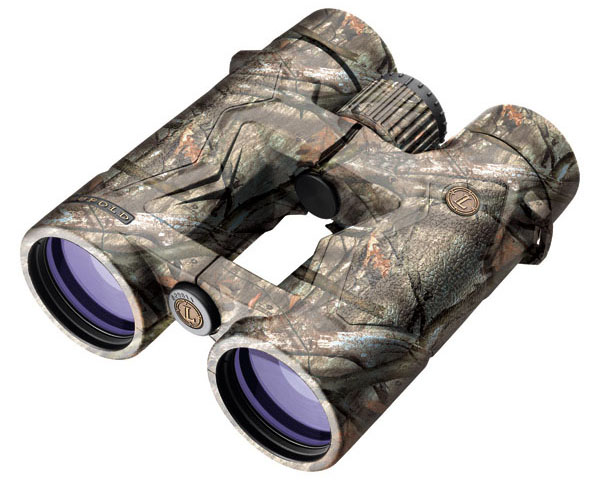
Binocular Design
There are two types of binocular designs on the market: porro and roof prism binoculars. Porro binoculars are the older of the two designs, and they are easily recognizable because the objective lenses swing out wide while the eyepieces, or viewfinders that you look through, and more narrow. Porro prisms are generally the less expensive of the two designs, but they come with two key drawbacks. First off they are definitely bulkier, and size can be a key factor in hunting because you want to keep your field gear load relatively light. But they can also be less durable that their counterparts roof prism binoculars. The prominent design on the market these days is the roof prism, and they are recognizable by their use of straight binocular tubes that put the objective lenses and eyepieces in line with one another. Roof prisms are more compact and more durable than porros, but they are the more expensive of the two designs. The thing is these days the price of roof prism binoculars has become much more reasonable, and there is no sense in overlooking them simply because of price worries anymore.
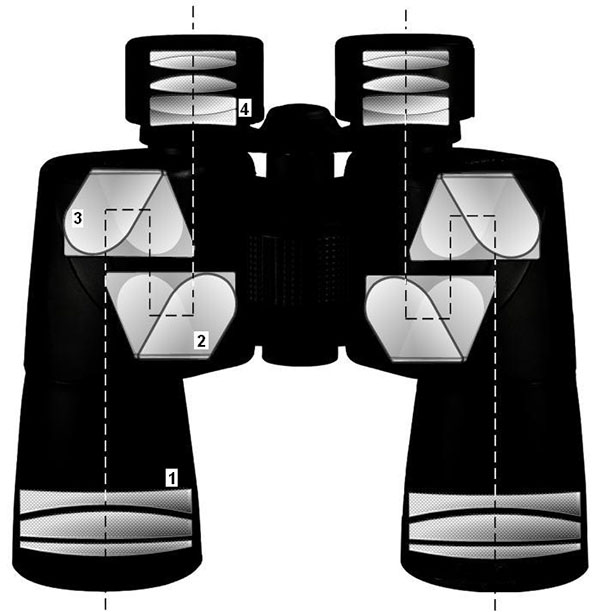
Weight
As we covered earlier, you have to do a balancing act between object lens size and weight. Objective lenses somewhere between 30-40mm will be the lighter options that still provide significant light gathering ability, but if you jump up to 50mm lenses, just remember that some added weight will follow. The advantage of a 50mm lens will be that they perform very well in low light situations, but you will likely experience some fatigue while transporting them and glassing with them over long periods of time. There are also compact options around 20-30mm, but if you go this route, pay special attention to reviews on optical quality. One thing that compact binoculars will offer is the ability to glass for hours on end and carry them around without much fatigue. If you hunt smaller patches of land or are a stickler for weight, then you may want to weigh compact binoculars as an appropriate option.
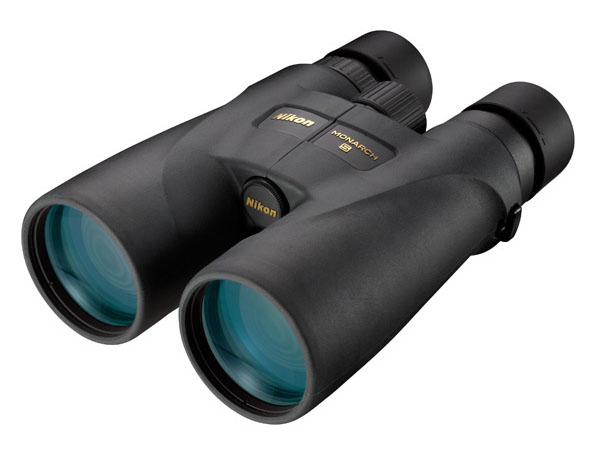
Ideal Magnification
There are really four magnifications that you can consider for hunting binoculars. In the middle you’ll find the two prominent magnifications 8x and 10x. These provide a good balance between magnification and field of view (or the area you see within the eyepiece), and you shouldn’t have too much time keeping the image steady while holding the binoculars in your hands. As the magnification power increases your ability to keep the binocular image steady while just using your hands will decrease, so if you’re worried about hand shake then choose 8x or 10x. For those who are older or are very concerned about binocular shake, then a step down to a 6x binocular is probably for you. These 6x binoculars will be better suited for closer range glassing and they won’t be that great in a high country type landscape. At the other end of the spectrum, there are 12x binoculars (and higher) but the risk of these binoculars becoming to shaky or presenting a narrow field of view is not worth the extra benefit of added magnification.
Eye Relief
Eye relief is another factor that you shouldn’t skip over in binoculars. Eye relief is the minimum amount of distance required from the eyepiece to the viewer’s eye to see a magnified image. You can find the eye relief of other optics you own just by starting your eye far away from the eyepiece and then slowly moving your eye towards the device until you can see through the optic. Optics like scopes have eye relief ranges around two to four inches, but you have to hold your eyes closer to a binocular since most models have an eye relief around one to two inches. If you wear glasses, then pay special attention to eye relief and only buy binoculars that offer extra long relief.
Durability
Finally, hunting binoculars are going to take abuses that other binoculars might not since you’ll be toting them into the field. They will be relatively protected while in the case in your pack, but you never know when a downpour might strike while you’re hunting. To avoid potentially crippling damage to your binoculars, skip the water resistant binoculars and go straight for the waterproof ones. Most decent quality binoculars should be fog proof and dust proof these days, but pay attention to those specs as well before you pull the trigger on your next pair of hunting binoculars.
Images One and Thumb and Three courtesy of Wikimedia Commons.
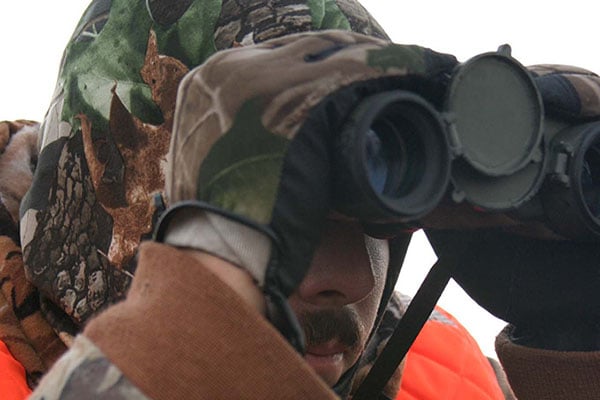
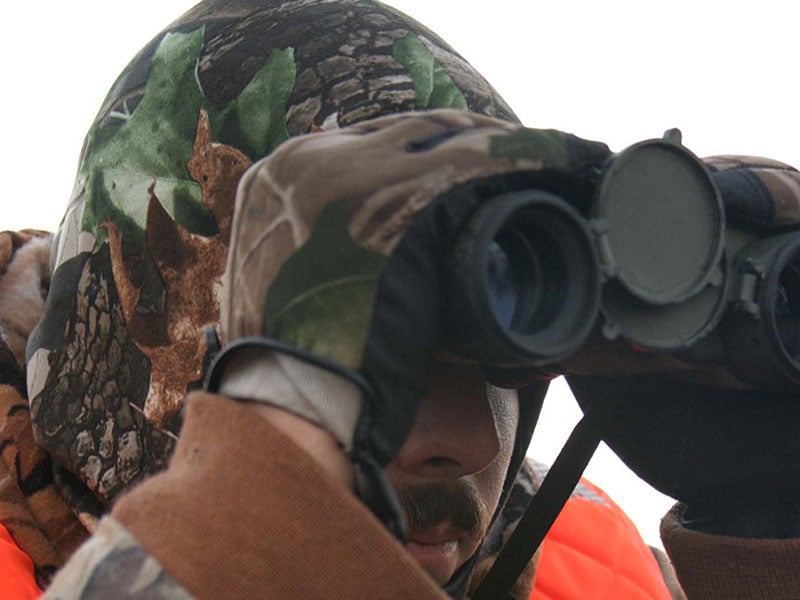
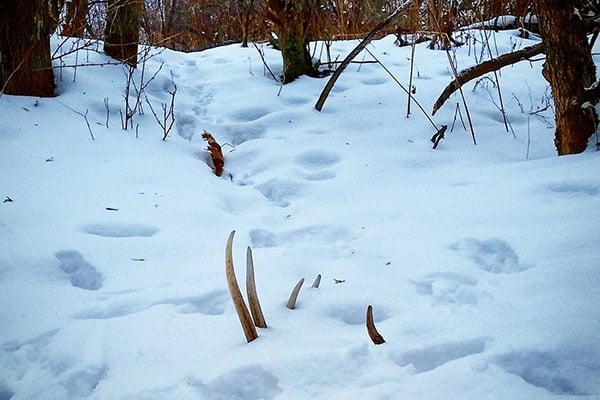
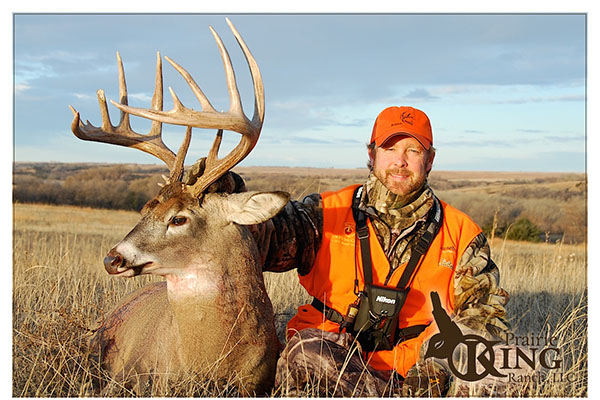









One comment
i got perfect idea about best hunting binocular, thanks for this best idea